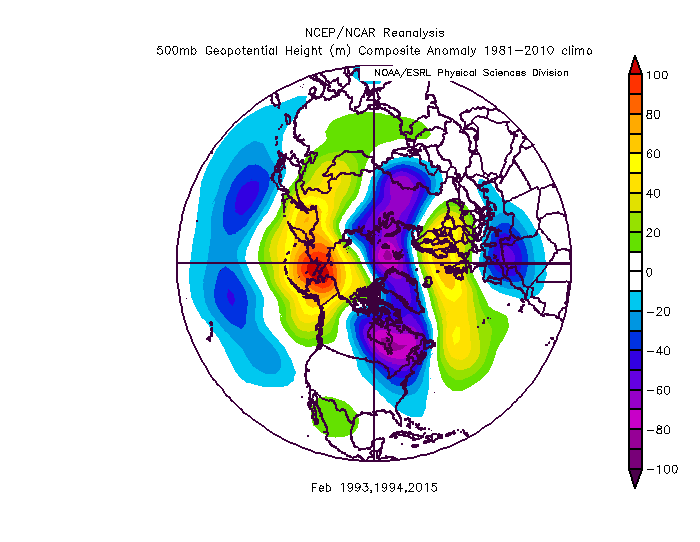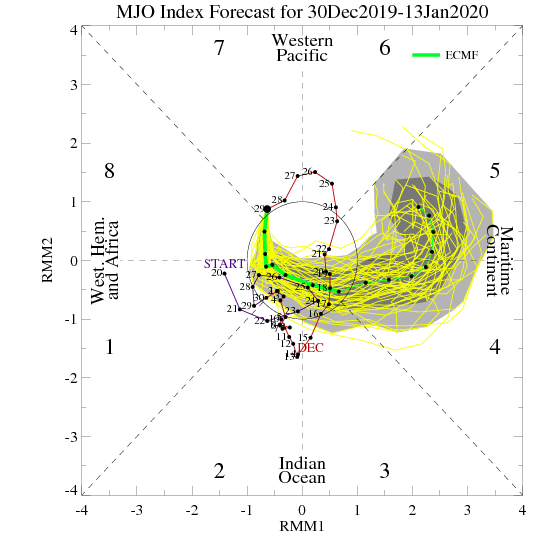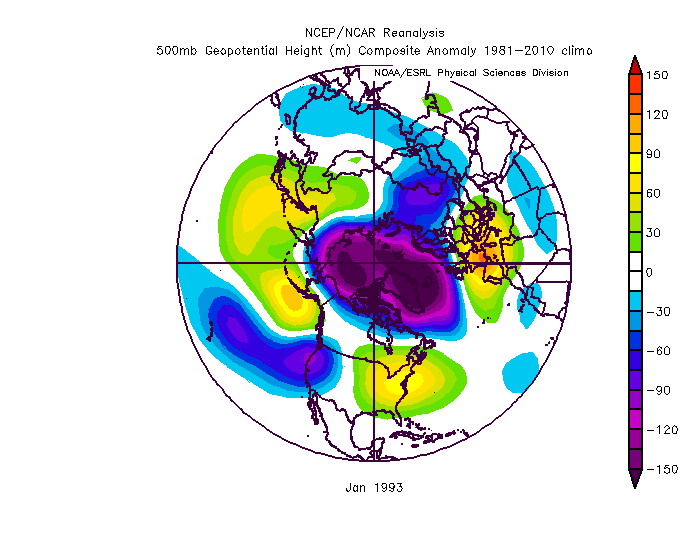-
Posts
26,651 -
Joined
-
Last visited
Content Type
Profiles
Blogs
Forums
American Weather
Media Demo
Store
Gallery
Everything posted by psuhoffman
-
some people KNOW what's going to happen...I am not one of them.
-
If the monster EPO ridge on all guidance is correct we do not "NEED" the AO/NAO to tank...but we do need it to pull back towards neutral or slightly positive which is what the EPS and GEPS is showing. The GEFS keeps swinging wildly between flipping the NAM negative or not but its been a hot mess lately and should be given much less weight until it starts showing some consistency. The GEPS and EPS especially have been much more consistent with a common progression/theme to the pattern evolution. The EPS idea of a neutral AO combined with that EPO ridge and some PNA ridging is just fine. It's not a HECS look but its a cold look and if we keep getting waves coming across with the active STJ and I would take my chances in that pattern.
-
By that time...phase 3/4 become more friendly also...and that is important if a wave fires in the IO it gives us more time in cold phases. A death near the dateline followed by a new wave initiation off Africa would give us a nice long extended run without MJO destructive interference. I have been skeptical of favorable MJO help. I am still not dancing in the streets but less pessimistic than a week ago. I know the bias in the guidance is to kill off waves early...but the last wave did die before cold phases, the waters near the MC are boiling, and the guidance was suggesting a stall/loop there which isn't unheard of (last year). But recent developments would favor wave propagation...but I will feel better once those projections get within 10 days. For now things look favorable for a colder period late January into February. Snow...TBD
-
A little but it wasn’t that far off from the pna ridge/+AO/NAO composite look. We definitely got lucky that a nice vort was passing at exactly the right time given how transient the pna ridge was. Our window was like 12 hours. But there were only 6 of those type storms so it’s not a high probability look but not unheard of. Of course yesterday’s storm wouldn’t show up in my sample because it wasn’t significant in the cities. In our areas we can luck our way to some snow a lot easier in flawed setups.
-
This is the snowfall recorded by the coop in Millers a few miles east of us. We have a little elevation advantage but I find their totals to be close to ours most storms. The second to last number is snowfall, the last is depth. They had snowcover from the storm on Jan 4th until sometime after the one on March 18th!
-
93/94 had such a crazy sharp gradient between places that had a ton of snow and not much. You didn’t have to go far. The closest coop to here in Millers had 44” that winter. That’s only a little above normal but they had snow otg from early January until late March. An incredible run. It seemed like every storm here was like 4” of snow followed by lots of ice. Places not far north of here stayed all snow and had 70”+ that winter. Every storm followed a similar track vs 2015 and 2014 which shifted the boundary around enough to get more regions into the fun. One caution, 2014 was the best but it had a helpful AO much of the time and even some NAO help in periods. If we get the ridge bridge look on the gefs and geps 2014 could be a good match. But if the AO stays positive like the Euro that puts us into a pattern more like Feb 1993, 1994, and 2015. 2015 was the best and it could go down that way again, but the other 2 had a lot of frustration with a string of snowstorms missing just to the northwest. But that look is still light years better than anything lately but given our choice the GEFS look with the epo AND tanking NAM is the better option to get everyone into the action imo.
-
It won’t last long with that look up top, especially as we head later in winter.
-
@Bob Chill gefs would just need another 48 hours. That epo ridge among with the developing -AO would beat down the SE ridge. I don’t care if that takes 17 days v 14 days so long as that’s real I’m happy. It’s still early January. I said a week ago when the disgusting look showed up that if it locked in more than 2 weeks or so that puts us into really ugly analog territory and we wanted to be able to see the “other side” by mid January. It’s only the 8th and the other side might be showing. That’s totally fine by me.
-
This is the euro mjo from a week ago It simply wasn’t going out far enough to get to where it is now. 4 days ago it was getting it into 6, not quite as far as yesterday but the difference was marginal and not close to the definitive trend towards 8 you are making it. You are taking some pretty big liberties to say “guidance is trending towards cold phases”. The last wave did not make it into phases 8/1. Before that we had a standing wave in 2/3. The euro does often tend to kill waves early. That is a bias I’ve noticed. The gfs looked even worse though. Somehow you don’t even post or mention that! There is also disagreement among experts. Some think this will progress into the pac and others are nervous about a stall in the MC. I am open to all options because the final outcome falls outside our high probability forecast range. I am happy for you that you feel as confident as you do in how everything will play out I don’t ever have that level of confidence in the mjo or anything else at 2+ weeks lead time. You also keep misinterpreting analysis as forecast. When I say “if we don’t get an epo ridge or the NAM state to change we’re screwed” that isn’t “he said we’re screwed”. I said we need to look for either the epo or NAM state to flip because we need one of those 2 factors to change. Yes if neither does then we ARE screwed. But you jump past the “if” and “or” and derive a definitive forecast instead of seeing the analysis of permutations. For the last 10 days the cpc pattern analogs have been dominated by some awful years. 1952, 1989, 2002, 2008 for example have all littered the top pattern comps day after day. You can think that’s no big deal if you want. And there are examples of comps that flipped better also and I presented those as well but they were the minority. But I also pointed out the bad years were mostly Nina’s and this is not. I gave both the good and bad options, and the bad ones outnumbered the good. That’s not my fault it’s just reality. Maybe we beat the odds this year. But the numbers are what they are. I presented what the current projected look lead to in past examples. It wasn’t good most of the time. If you have an issue with that sorry. My style is to present what could to right AND what could go wrong. I look at the fail scenarios and what to look out for. But I’m not a pessimist. I’ve often been bullish on snow chances when it’s warrented. I was bullish on this winter a month ago. I’ve been bullish on a big storm look from long range before. But only when there are legitimate good signs. I don’t blow smoke. If you only want to hear what could go right there are plenty of people that will make you feel warm and fuzzy no matter what the pattern is like JB.
-
That’s pretty much what I was saying my fear wrt where the eps look could evolve if we don’t get epo help with a strong +AO but it doesn’t have to go that way. But I would feel better if we got some indication forcing would change in the pac.
-
End?
-
I’m trying to be optimistic about the eps. But the danger if the NAM stays super positive and pac ridge relaxes but stays centered too far southwest once a trough pulls back into near AK ( which it would when the pac ridge relaxes) we would just transition to a zonal pac puke pattern. If we want a stable better pattern we either need AO/NAO help or an epo ridge. Absent either of those were rooting for luck with a perfectly timed transient feature like today. A ridge traverses the pna domain at the exact perfect time but even so it’s got limited potential and some will fail because of the overlying crap pattern. Who knows maybe we keep lucking our way to a decent year in an overall craptastic pattern but I don’t want to have to roll that way if we can avoid it.
-
It’s a convoluted look that has to be the result of higher than normal divergence. But there are features to like. The pac ridge relax and pressing into the west coast. Hints of a southern stream. Ridging west of Hudson. Still things not to like, the NAM. My take is the eps is unsure where to go which is better than some other options.
-
Know your climo, we spend 90% of our winter periods in “screwed”. It’s what we do best.
-
The GEFS is even stronger into Phase 5/6 than the euro, but worse it starts to loop the wave back through warm phases with high amplitude in the long range. The euro simply kills the wave and lets "other factors" take the wheel. If the GEFS is actually right and the MJO stays in high amplitude and does a loopty loop in phases 4-6 were screwed. Lucky the GEFS been getting schooled by the EPS for a while now. Of course with our luck this will be the time the GEFS nails it.
-
Depends what you consider “long term”. Most of the top analogs did lock in a long time. But there is no way I could pour through every week of every winter. I did look at every January. But a 10 day period can be masked within the monthly mean. But if the pattern locks in enough to show strongly on the monthly composite then no...all those examples it took blocking. Then there is this...since others have mentioned 1993 There are some significant differences in the pac near Hawaii and the location of the ridge so it didn’t show up as an analog but it’s similar in some ways. That year improved without blocking. But the snowy February was NW of the mid atl cities. And the one March storm was a crazy anomaly. A repeat of that pattern would be better but might not really make DC people happy. But it did get more of a trough in the east without blocking. But it wasn’t as good a match. So there is the issue of degrees. What is better? What is a good enough analog to include in the dataset. But a few things are clear from the analogs. 1. It’s a bad pattern. 2. It can last a long time (not always but it can) 3. If it locks in long enough to dominate a monthly mean it’s very likely to continue. 4. If it does without blocking were toast. That is all true but it leaves escape hatches. Maybe the pattern only lasts 10-15 days. If the pac ridge weakens or shifts into an epo ridge that opens non blocking options that might have not shown up. Or maybe we get blocking later in winter.
-
Yes but with the caveat that the pac ridge locked in for more than a short period. That feature is really starting to rage now but if the eps is right and it starts to wane in 12 days or so that takes us out of dire straights territory. If the eps long range is correct the January monthly mean won’t look like the bad composites as much. But if the pac ridge stays dominant then yes we would need blocking to offset. There are no good looks with a strong central pac ridge and a +AO/NAO Its still way out there though. And we would be better with blocking. The gradient pattern the cfs and eps is advertising can easily end up with most of the snow to our northwest if we don’t get lucky. Hate to say it but that look isn’t so good for your area. You would likely need more help. But it’s still a way better look than the raging pac ridge western trough combo.
-
It was a good run. Ejected the vortex away from AK which was my main gripe with 0z and built ridging into epo. First legit good run in a while. I was just kidding about Ji taking a 4 week hiatus.
-
Dude it almost worked.
-
Check back in 4 weeks!
-
That’s the best look we’ve seen. 12z Gefs is hot garbage. No way to spin it it’s at least 10 days away from good at day 16 and not even heading the right way. The geps is an ok pattern. Problem with the eps last night it had too much trough near AK. With the pac ridge. AK trough and no block it would transition us right back into a pac puke pattern. We would trade a SE ridge for pac puke zonal pattern. No thanks.
-
This...we have been in a pac puke pattern from an AK vortex. That isn’t good for the pac NW either. It’s also not good for us. Right now we are in a temporary flux between patterns and that’s why we have a shot as a minor snowfall tomorrow. But the coming pattern is good for the west bad for us. But the pac coast needs an anomaly to get snow even in a good pattern.
-
I know you aren't saying its "good" just better...but my fear with that look is that even if we got a colder shot as the trough slides east...with that look in the PAC, along with the EPO/AO/NAO it would be extremely short lived and unlikely to include much snow. IMO that pattern rolled forward the CONUS is about to get blasted by pacific air again like before xmas. What is left of the western trough would roll through and then we would go zonal. A week after that pot I would suspect we would see a big blue ball up top and a ring or red around it across the mid latitudes. Very 2002 like...that is how that year evolved. We are seeing a singular point in time at day 15 which looks "better" but I don't think that look is heading anywhere positive for snow opportunities. Maybe "better" than the absolutely worst look imaginable we will be in for about a week before that...but if we were in anything close to a decent pattern now looking at that in the long ranges we would be pretty upset about that look. ETA: ironically even though the GFS looks like a hot mess on wheels at day 16, its evolving the pattern in a direction that at least has a fraction more hope/possibility beyond that time period.
-
I have flat out said it so people can hate on me if they want...but if we get to Jan 15 or so and we are still looking at what we are looking at now...then yea I agree with that. I showed how this currently pattern in January...more than 50% of the time can persist all winter. But the minority of years where this pattern in January did flip better in February the signs of that were showing up well before February. In all of those examples by the last week of January the pattern was in transition. If we get to the point where we can see to February and it still looks like utter crap with a central pac ridge and +AO we are entering territory where no previous example turned out good. We aren't there YET... still another 10 days or so to see real improvements before we are to that point, but the clock is ticking.
-
No I think there is a possibility someone in our forum gets a small event (depending on your standards, Ji and Mdecoy should probably ignore it though). But even if DC manages a nice 2" event Tuesday the idea of reaching climo for winter is still in some jeopardy given the pattern look we are seeing. But even most of our really bad years had some snow at some point. When I say things don't look good I usually mean wrt to climo not that we won't get any snow at all.








